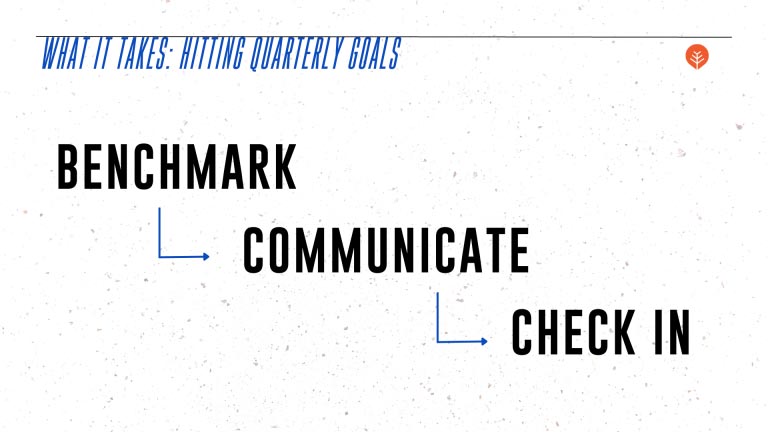What It Takes: 5 Questions to Ask NOW So You Hit Your 2023 Business Goals
We’re halfway through Q1 already! How are your business goals tracking? Short-term goals are the key to long-term success, and first-quarter business goals set the tone for the rest of the year. Q1 performance will affect your team or company’s chances of achieving longer-term goals (like hitting $100M in revenue this year).
Progress toward quarterly business goals provides a clear picture of what the company can achieve and will drive employee motivation (up or down). Hitting goals inspires employees to reach further and achieve more in the next quarter. Missing plans can hurt morale, decrease productivity, and negatively impact employee retention.
Meeting or exceeding Q1 goals is a sign that a company is on track to meet its annual objectives, which helps maintain employee focus and commitment throughout the rest of the year and typically leads to an increase in the quality of work and performance.
Here’s what it takes to hit your goals and how to pivot if you’re off track–
Questions to Check Your Teams’ Progress
Let’s do a pulse check:
- Are your teams’ goals well-defined?
- Is there an actionable plan in place to progress toward those goals?
- Does your team have defined key results to track progress?
- Are the tactics in that action plan producing the desired results?
- Do you feel confident that your team can reach its goals?
Yes? Great, you’re all done here. If the answer to the above is ‘no’, it may be time for a mid-quarter reset.
3 Steps for Setting – and Hitting – Quarterly Goals
Goals and next steps should be clearly defined by the start of each quarter so your team can hit the ground running. To set and follow through on team goals:
1. Benchmark
Set specific, measurable, and achievable goals and then break those goals down into smaller, more manageable tasks.
2. Communicate
Clearly communicate goals and provide the resources and support needed to reach them. Communicate the business impact of each goal to get buy-in from your team and create a sense of urgency.
3. Check-in
Hold regular check-ins with your team, provide support and feedback, and identify blockers early. Frequent check-ins keep projects running smoothly with minimal delays.
Why You’re Missing Your Goals
Some of the most common reasons teams miss quarterly goals include:
Lack of clarity or specificity in goals
If goals are not clearly defined, your team won’t know what is expected of them or how to work toward the desired outcome.
Insufficient resources or support
Your team will struggle if they don’t have the resources or support they need to succeed. Pain points usually include missing skillsets, lack of bandwidth, lack of team resources, insufficient funding, or lack of access to productivity tools and equipment.
Poor communication and collaboration
Teams that lack effective communication practices will struggle to collaborate effectively, which can result in project delays and misalignment.
Changing circumstances
Unexpected changes in the market or economy can steer your team off course and make goals unattainable. Pivot using the tips below.
Burnout and high turnover
High levels of burnout or high turnover on your team will impact productivity and morale, affecting output volume and quality.
Resistance to change
Your team can become its own blocker if employees are resistant to change and unwilling to adapt to new strategies or approaches.
Inadequate planning and preparation
Without a clear game plan, strategy, or adequate preparation, your team won’t know what their next move should be, and you won’t know how to measure success or provide support.
Unrealistic goals
Goals that are set too high or are unrealistic given the resources and support available set your team up to fail.
Goal Setting Frameworks
Now that this quarter is under control, set your team up for success by revaluating how you’ll set, measure, and achieve goals. Craft a new short-term and long-term goal-setting process that works for your team and sticks to it. Use these frameworks as a starting point to create a customized goal-setting method for you and your team:
Goals, Signals, Measures
This method focuses on outlining goals, identifying signals of success, and building measures to track performance. Atlassian provides a great playbook for getting this started with your team.
SMART Goals
SMART goals are specific, measurable, achievable, realistic, and time-bound. Asana explains why you need each SMART component and how to apply them to your goals.
OKR (Objective Key Result)
OKR aligns Objectives (O) with Key Results (KR). OKRs can be created at the top level to reflect business goals and be cascaded down through the organization. All subsequent OKRs should align with, support, or contribute to the top-level business goals. Adobe breaks down OKR best practices and examples for each department.
Locke and Latham’s 5 Principles
Created by Edwin Locke and Dr. Gary Latham, this method is backed by research finding that there is a strong link between employee motivation, measurable goal setting, feedback, and performance. This method promotes Clarity, Challenge, Commitment, Feedback, and Consideration of Task Complexity. Chron lays out a goal-setting exercise using Locke and Latham’s 5 principles.
Goal Pyramid
The Pyramid method starts with a vision or ‘north star’ and works down through Goals, Objectives, KPIs, and Critical Success Factors. Setting goals this way ensures all goals and objectives align from the top down and bottom up. Medium created a step-by-step guide to workshopping goals using the Pyramid method.
Hitting business goals requires strategic planning, preparation, communication, and frequent feedback. Take stock of your team’s progress so far and make adjustments where necessary.
Solve bandwidth issues and close skill gaps preventing your team from reaching their goals. Connect with NuWest workforce experts to hire top contract talent.


